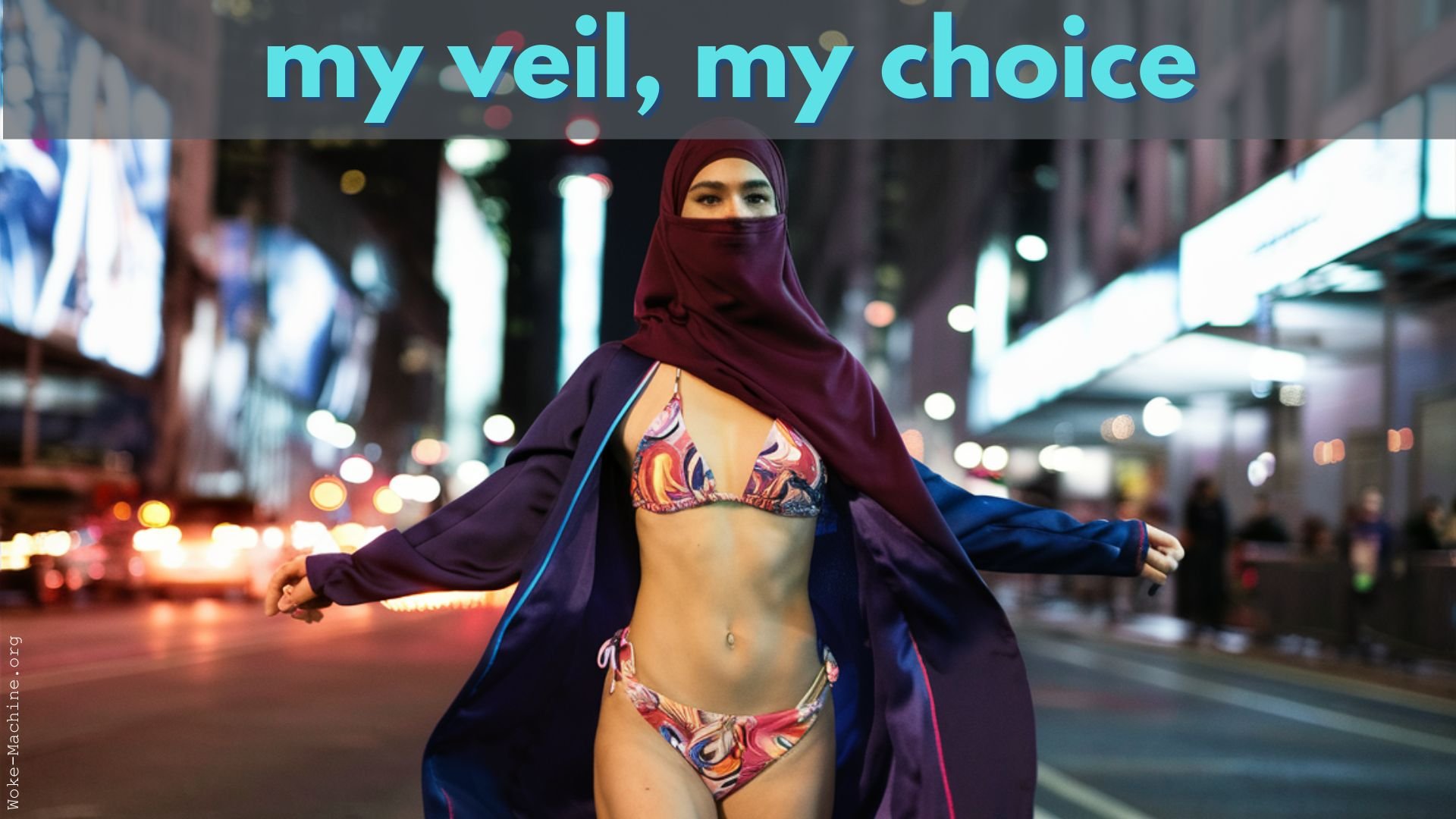
my veil, my choice!
Let's refuse to equate the veil with submission and show how it can be a source of beauty for women.
Veiled, we sing of freedom and dance with grace, voluptuousness and euphoria.
Veiled, we laugh with happiness and love with passion.
Our bodies, and everything we put on - or don't put on - to dress them, belong to us!
Tract_28E| Woke-Machine.org | Download the tract_28
Scientific arguments
When we plumb the depths of the cultural ocean, we find that the veil has always been perceived by some as a hindrance, a form of submission imposed by patriarchal authority. Let's refuse to succumb to this notion, for the veil, that sublime adornment, is in reality a source of beautification, freedom and an eloquent symbol of autonomy for many women.
Let's take a moment to visualize a veiled woman. The grace with which she wears it, the elegance it exudes, the determination in her eyes. The veil, more than just a piece of cloth, is a personal choice, an act of feminine empowerment, an eloquent means of asserting one's cultural and religious identity, a powerful instrument of personal expression.
A woman who chooses to wear the veil does not abdicate before misogynistic dogmas; on the contrary, she dances with a grace and voluptuousness that never ceases to amaze. She dances, her veil floating around her, capturing the souls of those who watch and admire her, reminding them of the beauty of diversity and the richness of our humanity. The agility with which she moves, the ease with which she expresses her personality, all make for a powerful picture of female emancipation, reinforcing the affirmation of her individuality.
She laughs. Yes, she laughs with a contagious happiness that spreads like a benevolent breeze. She laughs with a joy that resonates like a hymn to freedom, a celebration of autonomy and self-assertion. This joy is conveyed by every inch of her veil, which, far from being a symbol of submission, is instead a declaration of independence, a vibrant plea for self-determination.
Veiled, she loves. She loves with a passion that shines with the authenticity of her being and her free choice. She loves without compromising her personal choice to wear the veil, a conviction that has resisted recurrent attempts to devalue it, to stifle it; a conviction that, on the contrary, illuminates her path of love and underlines the richness of her affective life.
Her body, this temple of the divine, this masterpiece of nature, is hers. She chooses what she wants to put on it, how she wants to dress it, what she wants to reveal or conceal. The veil is not an imposition; it's a choice, a sign of self-ownership, a symbol of agency. The veil is her personal statement, her calling card to the world: this is who I am, this is what I choose to wear, and this is how I choose to embellish my existence.
Far from being a tool of deculturation, the veil is the most striking expression of individuality. It affirms identity, strengthens autonomy and enhances a woman's intrinsic beauty, in line with her personal convictions and her cultural and spiritual vision.
It is not in uniformity, but in diversity, in the acceptance of otherness, that we find the beauty and strength of our humanity. The veil is, in this sense, an ode to diversity and a vibrant plea for every woman's right to shape her destiny with unwavering confidence.
Veiled, we sing of freedom, we dance with voluptuous grace, we laugh with infectious joy and we love with vibrant passion. Veiled, we proudly assert our place in the world and our right to self-determination. It's our body, it's our choice, and we joyfully celebrate the beauty of this diversity, the richness of this otherness, the power of this personal affirmation.
Download tract_en_28E A4 - PDF | X size JPG (600x1200)
This page has been translated by someone whose original language is not English. Please improve it by contacting us.
We apologise in advance if anything on this page offends you. If this is the case, please go here.
